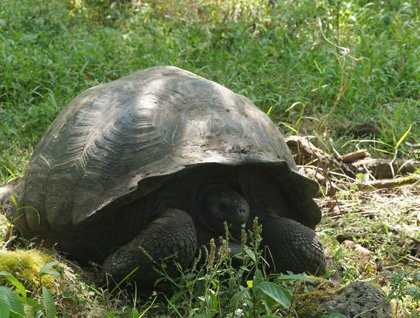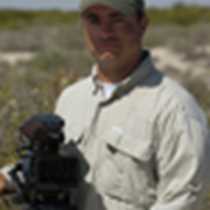Today we visited Santa Cruz Island. National Geographic Endeavour dropped anchor early in Academy Bay, at the island’s southern shores. This is also the location of the largest town of the Galapagos archipelago, Puerto Ayora.
We landed early, first visiting the rearing center of giant tortoises at the premises of the Charles Darwin Research Station and the National Park headquarters. The rearing center is one of the most important local projects for conservation, offering enormous assistance to several populations of Galapagos tortoises, taking them back from the brink of extinction. This is one of the most successful conservation programs in the world. Here we saw a few species of tortoises, all with different shell shapes, as well as the young animals that have hatched and are raised at the same compound. The protection and pre-adaptation pens are full of small individuals awaiting repatriation to the distant islands and volcanoes where they belong. This is a great place to visit, for it remind us about the fragility of our small group of islands, and our responsibility to ensure their survival.
Then we had a chance to walk through town to meet at “The Rock,” a local establishment where refreshments were served, and from which we started different activities that were arranged for us. Some of our guests went biking, some to a sugar cane plantation and a rum still, while some others visited the Tomás de Berlanga School, an educational project supported by Lindblad Expeditions and National Geographic. With these, we all had the chance to experience a bit of what it means to live on an oceanic island.
We regrouped again at the Aquelarre, a cozy restaurant in the highlands where we had lunch and rested prior to continuing with the adventure.
After our lovely meal we followed with an exploration of the highlands, where large numbers of wild tortoises freely roam within the boundaries of privately owned land. These evergreen meadows, at the higher slopes of a middle-aged shield volcano, are in the paths of the migration of these enormous herbivores. These areas have being used by this lineage for millennia. The grasslands are now occupied by people who have opened their farms to visitors, allowing us to witness the marvelous reptilians while they graze, sleep, breed, etc. It was a great way to spend the afternoon! There was also a visit to a lava tube, an interesting geological feature that looks, and feels, like an architectural prowess from the underworld.
While this was taking place, some of our fellow travelers decided to head back into town, or to the comfort of the ship a little earlier.
At 1800 hours we were all back onboard, expecting a surprise which came in the form of an art ensemble that performed Ecuadorian and South American dance and music, closing another spectacular day in the Galapagos.






